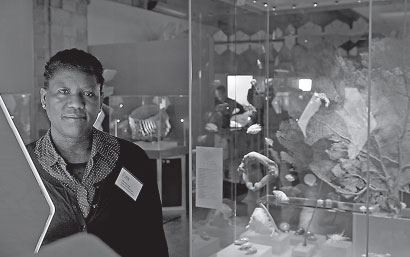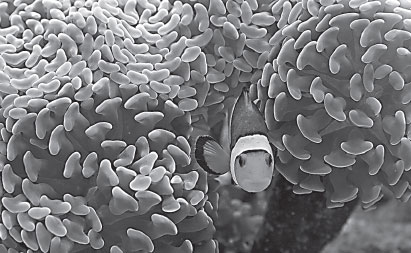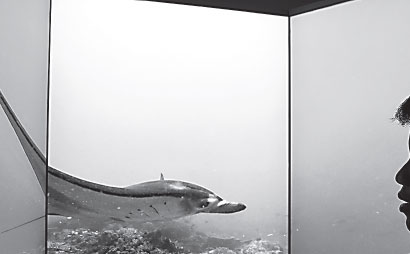'Virtual dive' takes you on trip to the world's most spectacular coral reefs
If a trip to the Great Barrier Reef is beyond your means this year, the Natural History Museum has a novel alternative.
The museum is creating a "virtual dive" that visitors can undertake without leaving dry land.
A gallery space will be transformed with a bank of screens providing a 360 degree immersive experience, described as "Google Street View but on the sea floor". Sound and light effects aim to recreate the sensation of being underwater.
The technology will allow users to zoom in and explore different reefs from around the world. The images of Heron Island on the Great Barrier Reef, Tubbataha Reef in the Philippines, Hourglass Reef in Bermuda and Komodo Island in Indonesia were taken from the Catlin Seaview Survey, a global scientific study of the world's coral reefs.
Its divers used specially-designed cameras that record an image every 3-6 seconds. The resulting images are then stitched together to create a panoramic view.
Coral Reefs: Secret Cities of the Sea, which opens on March 27, will also feature more than 200 exhibits from the museum's collection.
Some are stuffed - a two-metre long giant grouper - and others are preserved, including a Picasso triggerfish caught in 1806 and one of the most venomous creatures in the sea, a blue-ringed octopus.
The corals on display include a selection collected by Charles Darwin during the voyage of HMS Beagle. Darwin published a study of coral reefs in 1842, based on his findings in the Keeling Islands in the Indian Ocean.
Some exhibits have not been on public show before. A giant turbinaria coral has been stored in a wooden box until now, as there was no suitable home for it within the museum.
Felicity Paynter, who is responsible for creating the exhibition, said she hoped the experience would leave visitors feeling "surprised, amazed and emotional".
She said: "I had to think about what visitors might already know, what they don't know and what questions we might be able to answer for them. On the one hand, there are lots of very cool, weird and wonderful creatures that live on coral reefs, but there are also some really difficult and abstract concepts."
The Catlin study has a serious purpose: to monitor the health of the underwater ecosystem. In the last 30 years, around 40 per cent of the world's coral has been lost due to over-fishing, pollution and climate.
According to the museum, coral reefs are declining more quickly than rainforests are being cut down.
Research undertaken for the exhibition found that the majority of people are unaware that coral is alive.
Dr Ken Johnson, the museum's coral reef researcher, said: "Coral reefs are not simply beautiful environments. They provide food, income and storm protection for many millions of people around the world.
"The museum has an exceptional collection of corals from ancient and modern reefs that we have been studying, to understand how these animals, and the diverse habitats they create, have responded to changes in the ocean."
The exhibition concludes with a living exhibit: An aquarium stocked with 20 types of brightly coloured coral and 100 fish.
The coral has been borrowed from another London museum, the Horniman. Its curator, Jamie Craggs, said it had been a challenge to get the right mix of fish. This could be the first show at the Natural History Museum where the exhibits are in danger of eating one another.
"With the yellowtail blue damsels, there's a rule of one or six. You don't go below six because they'll kill each other.
"You can have a broad understanding of whether any species will mix with another or not, but you can get individuals that are more problematic than others. We had to take out the emperor angelfish for eating the coral," he said.
|
Miranda Lowe, Natural History Museum collection manager at the exhibit 'Coral Reefs. |
|
Secret Cities of the Sea' a clownfish. |
|
One of the virtual dive screens showing a 180-degree view of five coral reefs. Photos By Alastair Grant / AP |
(China Daily 04/04/2015 page8)

















